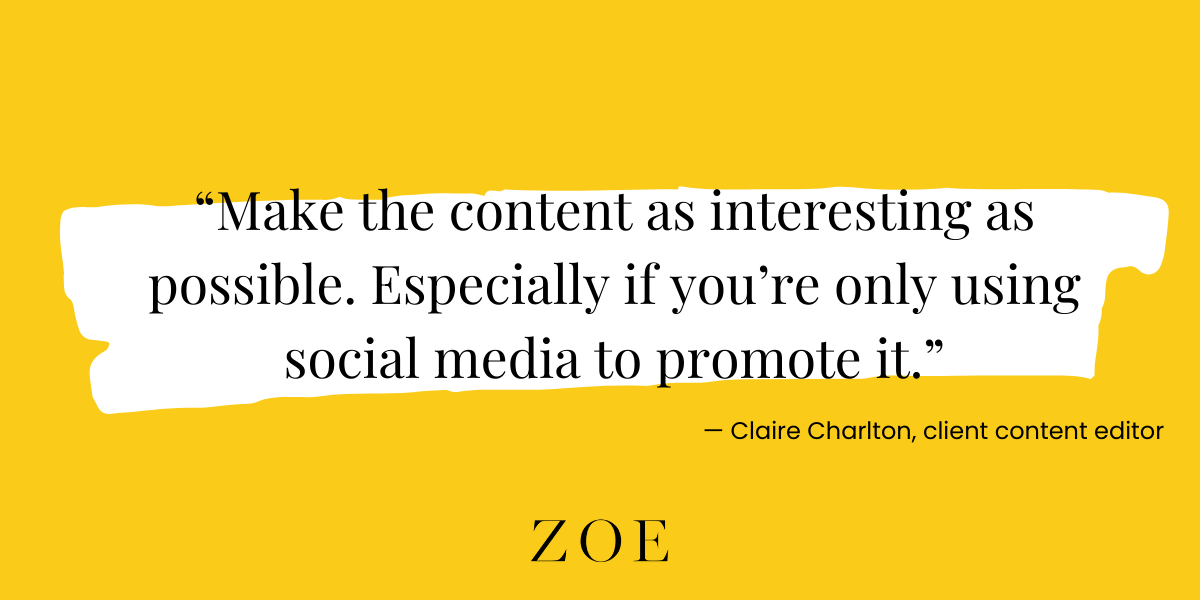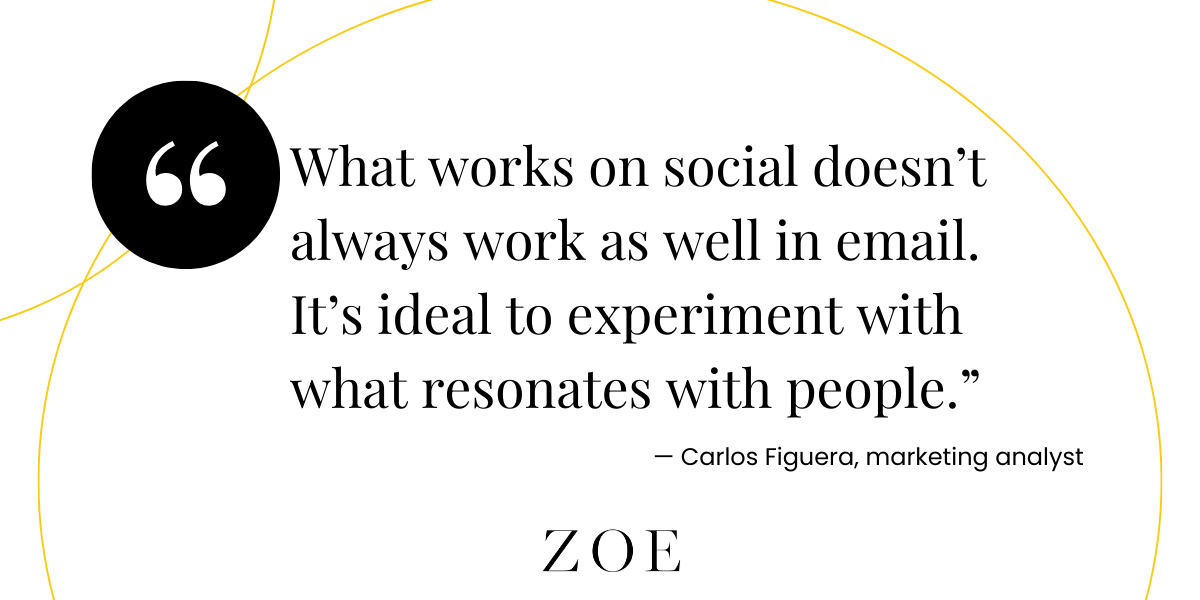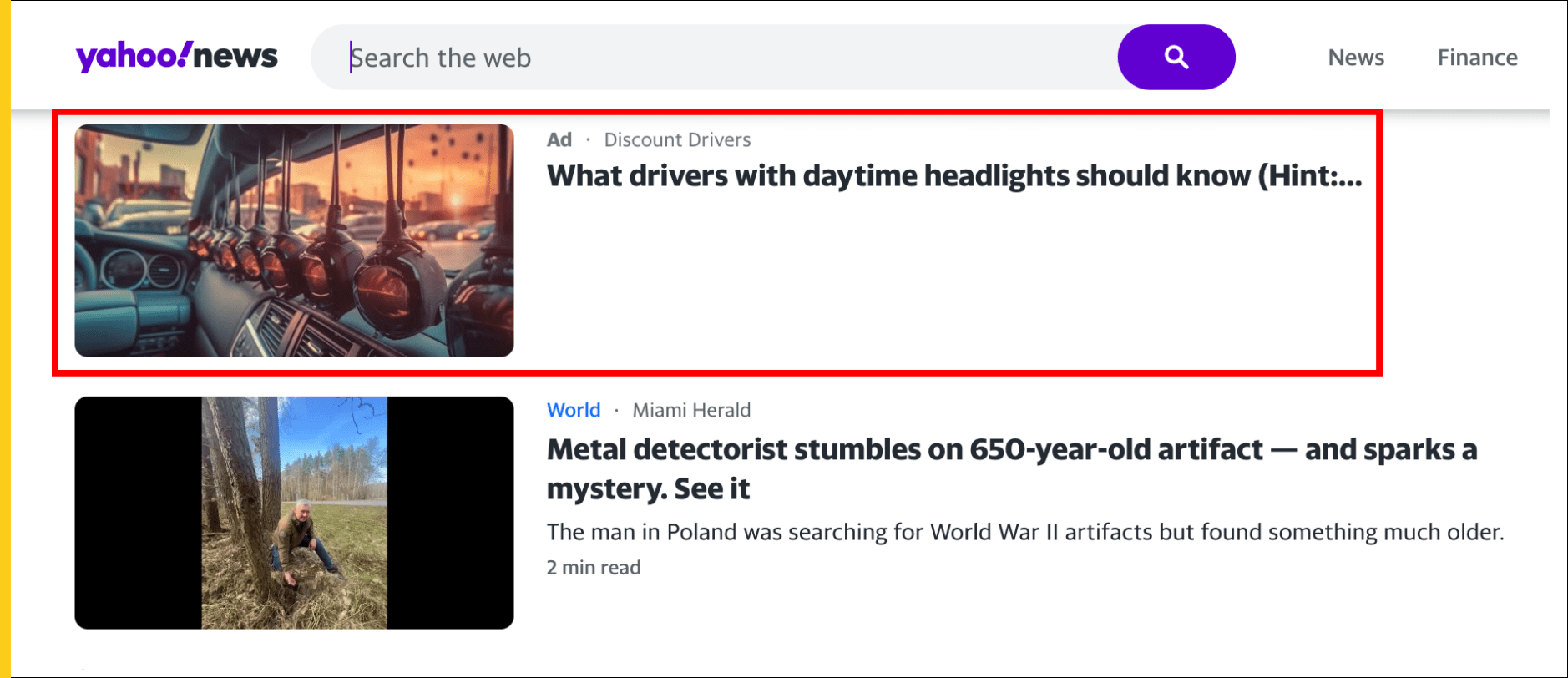Search for topics or resources
Enter your search below and hit enter or click the search icon.
March 14th, 2024 | 2 min. read
By Kim Kovelle

If your business blogs or creates sponsored content, you know it takes time to gain traction. There’s competition, Google’s algorithms — and the natural SEO lag.
But waiting isn’t the answer, says Claire Charlton, a content editor at Zoe Marketing & Communications.
“It’s not a ‘build it and they will come’ experience for content,” she says. “You have to build it and you have to promote it, every way you can.”
At Zoe, we’ve helped clients market their content since 2020. Here are four proven strategies to expand your reach and engagement.
Facebook and Instagram are good starting points, but LinkedIn or niche platforms may better fit your audience.

Post at least once or twice a week, offering value instead of just links.
“It’s a big ask to get people to click,” Charlton says. “Make the content as interesting as possible.” A few approaches to stand out:
Here’s a sample Facebook post by marketing platform Semrush. Note that you could click to their website, but you get all the detail you need from the infographic:
Once you have an organic presence, social ads boost engagement. At Zoe, small- to mid-sized business campaigns start at $200/month, with click-through rates (CTR) averaging 2%.
Email remains one of the best ways to engage your audience.
If you send a newsletter to clients or prospects, promote content when it makes sense — not just for the sake of it.
Segmenting your audience helps. A med spa, for instance, might send different content to:
This personalized approach increases engagement and shows you understand their needs.
Targeted email campaigns reach specific audiences, similar to paid social.
Carlos Figuera, a marketing analyst at Zoe, points to a boarding school using content on mentorship. “For this school, paid newsletters perform exceptionally well,” he says. “They’re reaching parents of kids 8-17 in key ZIP codes.”
The average CTR for paid emails is 1.7%, but this school sees above 2.5% due to precise targeting, he says. Rates start at $800.
“Experiment with what resonates,” Figuera adds. “What works on social doesn’t always work as well in email.”

Partner with brands, creators or influencers who share your audience.
Influencer collaborations can boost engagement, too. Businesses typically pay $250-$450 per post per 10,000 followers.
Programmatic ads appear as regular articles on websites but are labeled as ads. They blend with content, making them less intrusive while maintaining credibility.
Here’s a sample on Yahoo News:

“It’s great for brand awareness,” Figuera says. “But its effectiveness depends on the quality and relevance of the content.”
Like social and email, it allows audience targeting but often requires a larger investment — typically in the thousands per month.
Content marketing takes time, but smart promotion speeds results.
Social media and email are effective for most businesses, while partnerships and programmatic ads can expand reach further.
Need help promoting or creating content? Talk to us. Zoe Marketing & Communications can ensure your content reaches the right audience.
If you’re still exploring content, check out these articles:
As Zoe Marketing & Communications’ content manager, Kim Kovelle brings over 20 years of writing and editing experience in metro Detroit. She has strong roots in community journalism and a knack for making complicated topics make more sense.
